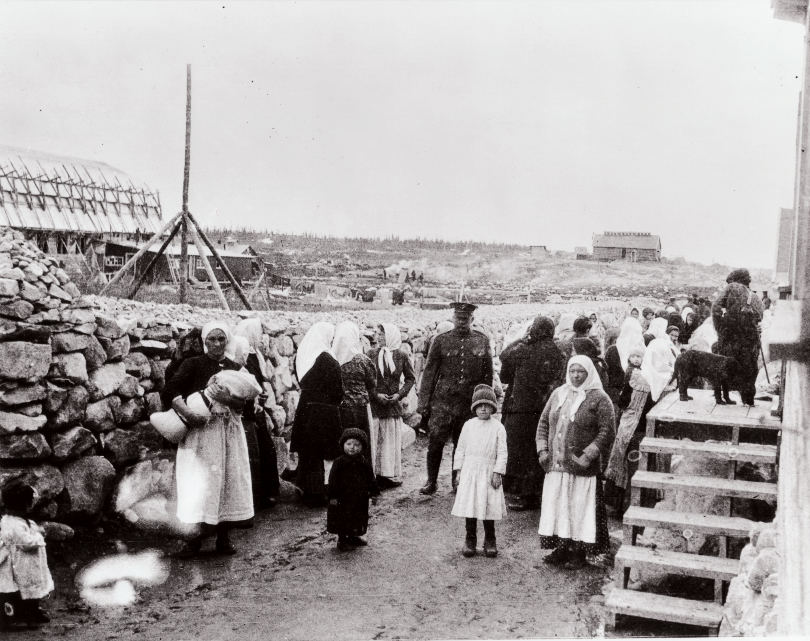It has been just over 100 years since the Spirit Lake internment camp opened in 1915 and 125 years since the beginning of Ukrainian settlement in Canada. The camp was located near Amos, six and a half hours away from Montreal.
This month, the Ukrainian Canadian Civil Liberties Association is requesting the intervention of the Minister of Canadian Heritage, Mélanie Joly, to protect a cemetery containing the remains of 16 people who died at the Spirit Lake camp.
One of three internment camps in Quebec, the Spirit Lake camp was part of a national campaign to register an estimated 80,000 people and imprison 8,579 throughout the country. The majority of those who were interned were of Ukrainian heritage, from a region that was then part of the Austro-Hungarian Empire. The Spirit Lake camp would become the second largest of Quebec’s internment camps, as a result of the War Measures Act, and prejudice and panic during World War I.
Spirit Lake internee cemetery
Established by the Government of Canada in 2008, the Endowment Council of the Canadian First World War Internment Recognition Fund “has a formal mandate to secure and restore internee cemeteries.”
The council has done so successfully in Kapuskasing, Ontario and Fernie, British Columbia. According to a press release, “The Council has not, however, been able to acquire, repair, or re-consecrate the Spirit Lake internee cemetery, despite having made repeated inquiries over eight years, during which time the internee cemetery has further deteriorated.”
The land on which the cemetery is located was acquired in 1988 by a farming couple. Efforts made by the Spirit Lake Camp Corporation to incorporate the internee cemetery, or at least restore and secure limited rights of access, have been rebuffed by the owners.
Conditions in the camp
In an email to The Daily, Yurij Luhovy, an award-winning producer and director of Okradena Zemlya (“Stolen Land”), a documentary on the Holodomor 1932-33 famine-genocide in Soviet Ukraine, spoke about the conditions in the camps.
“It was grueling, strenuous hard work. Internees were used for hard labour with little pay. What little wealth some had, was confiscated. Some were bayonetted. Many suffered from accidents while cutting the wood,” he wrote.
“There was a pre-existing prejudice against these people in Canadian society that was exacerbated by war-time [panic].”
“[Internees] were forced not only to maintain the camps but to work for private concerns. Often they were mistreated by the guards. These harsh conditions and forced confinement took not only a physical but a mental toll on the internees,” he continued.
Lubomyr Luciuk, author and professor at the Royal Military College of Canada, told The Daily, “There was a pre-existing prejudice against these people in Canadian society that was exacerbated by war-time [panic].”
James Slobodian, chair of the Spirit Lake Center, told The Daily, “The people arrived on the first of January, 1915, in the cold. […] They left on the 28th of January, 1917, also in the winter.” He mentioned that “some were transferred to Kapuskasing, another camp, others were transferred down the Nova Scotia way.”
Legacy of internment
Canada’s World War I internment operations started in 1914 and ended in 1920, despite the war ending in 1918.
Luhovy wrote that, “Those that were interned felt humiliated, confused, not understanding why they were labelled ‘enemy aliens.’”
“Most of the people who went through the internment operations didn’t speak about it except perhaps in their own families.”
“As for the other Canadians, some were understanding and sympathetic to what the Ukrainians and others had endured, being unjustly interned,” he added. “Others, held an anti-immigrant feeling toward new immigrants arriving in Canada.”
Luciuk commented that “Most of [those who were interned] that I did get the chance to speak to said they preferred not to refer to or remember, most of the people who went through the internment operations didn’t speak about it except perhaps in their own families.”
In 2005, the Canadian government adopted the Internment of Persons of Ukrainian Origin Recognition Act, followed by the Canada First World War Internment Recognition Fund in 2008.
On the relationship between the Ukrainian Canadian community and the rest of Canada today, Luhovy wrote that it was very positive. He noted, however, that “It is important we know all aspects of Canadian history, and try to avoid making similar mistakes in the future.”
